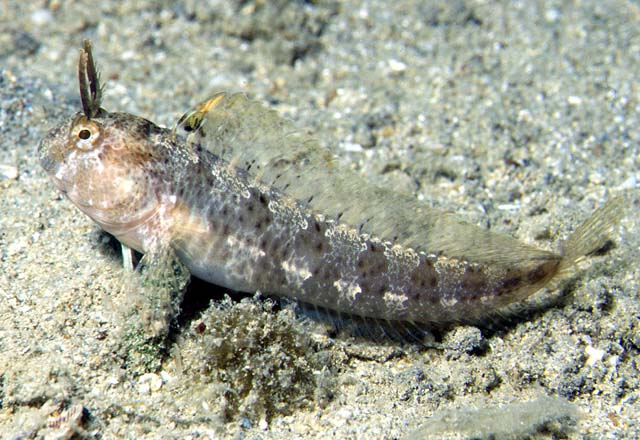| Blenniidae (Combtooth blennies), subfamily: Salariinae |
| 15 cm TL (male/unsexed) |
|
demersal; brackish; marine; depth range 3 - 15 m |
| Eastern Atlantic: coast of Portugal, Spain and Morocco south to Guinea. Also in all parts of the Mediterranean (except Syria, Lebanon, Israel and Egypt), in the Sea of Marmara and the Black Sea, and Canary Islands (Ref. 5981). |
|
|
| Adults occur over sandy bottoms with boulders and light vegetation. They hide in crevices where the nests are being guarded by the male (Ref. 5981). Oviparous. Eggs are demersal and adhesive (Ref. 205), and are attached to the substrate via a filamentous, adhesive pad or pedestal (Ref. 94114). Larvae are planktonic, often found in shallow, coastal waters (Ref. 94114). |
|
Least Concern (LC); Date assessed: 14 November 2007 Ref. (130435)
|
| harmless |
Source and more info: www.fishbase.org. For personal, classroom, and other internal use only. Not for publication.
